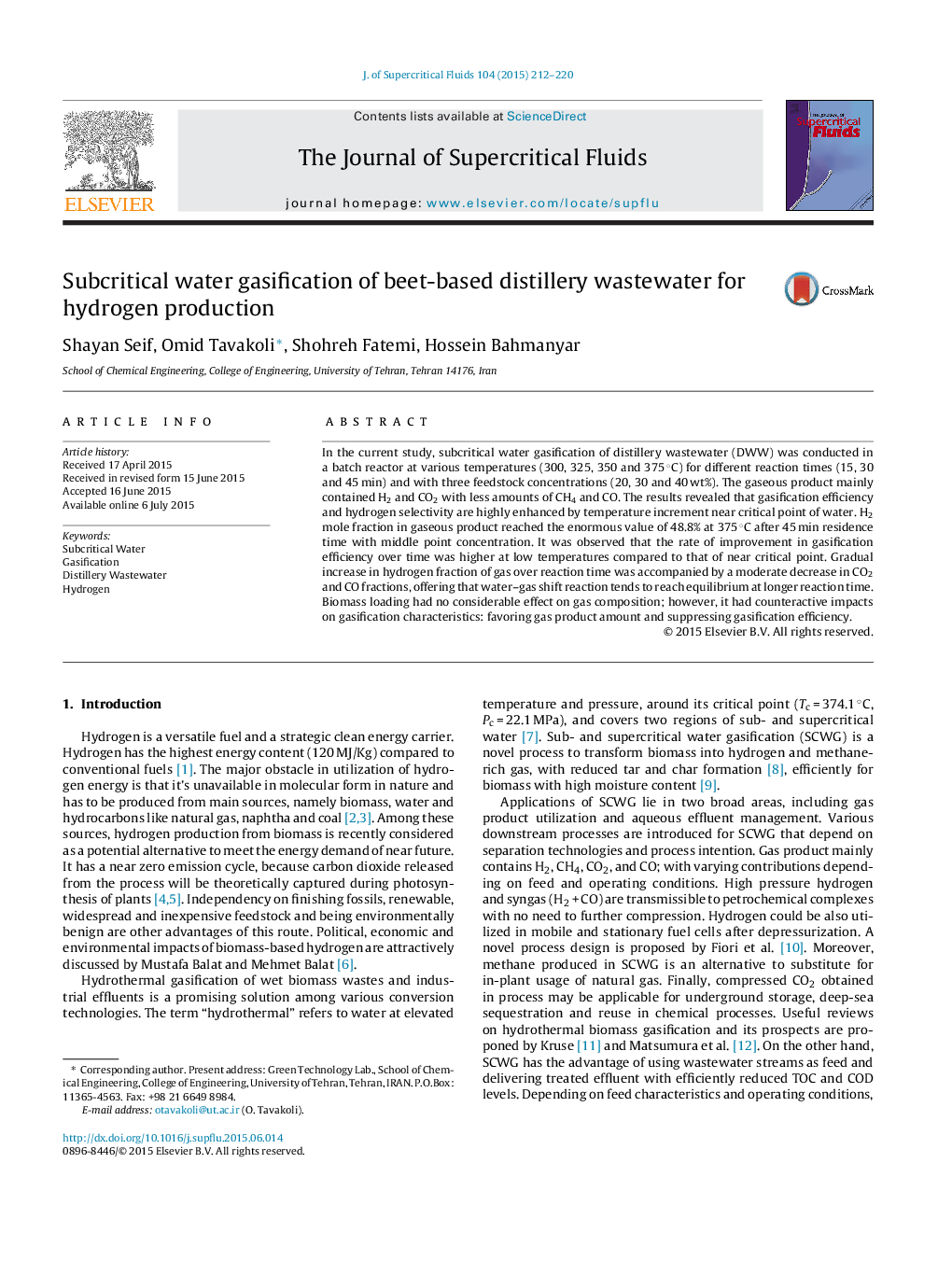| Article ID | Journal | Published Year | Pages | File Type |
|---|---|---|---|---|
| 230125 | The Journal of Supercritical Fluids | 2015 | 9 Pages |
•Hydrogen production exhibited strong temperature dependence.•Prolonging the reaction time was less effective at higher temperatures.•Biomass loading is much effective for gas production compared to reaction time.•Biomass loading had no considerable effect on gas composition.
In the current study, subcritical water gasification of distillery wastewater (DWW) was conducted in a batch reactor at various temperatures (300, 325, 350 and 375 °C) for different reaction times (15, 30 and 45 min) and with three feedstock concentrations (20, 30 and 40 wt%). The gaseous product mainly contained H2 and CO2 with less amounts of CH4 and CO. The results revealed that gasification efficiency and hydrogen selectivity are highly enhanced by temperature increment near critical point of water. H2 mole fraction in gaseous product reached the enormous value of 48.8% at 375 °C after 45 min residence time with middle point concentration. It was observed that the rate of improvement in gasification efficiency over time was higher at low temperatures compared to that of near critical point. Gradual increase in hydrogen fraction of gas over reaction time was accompanied by a moderate decrease in CO2 and CO fractions, offering that water–gas shift reaction tends to reach equilibrium at longer reaction time. Biomass loading had no considerable effect on gas composition; however, it had counteractive impacts on gasification characteristics: favoring gas product amount and suppressing gasification efficiency.
Graphical abstractFigure optionsDownload full-size imageDownload as PowerPoint slide
